Subject:
Evaluation of Behavior of Indoor Radioactive Aerosol Caused by Radon Decay Products
In tightly enclosed artificial environments such as indoor or underground spaces, high radon and thoron concentrations in air occur. This is due to less ventilation and additional sources of radon and thoron. Radon and thoron decay products, some of them emit an alpha particle, are inhaled and deposit in human respiratory tract, resulting in increased radiological doses and consequently in increased lung cancer risk. It is therefore necessary to assess not only the radon and thoron concentration level but also characteristics of radioactive aerosols bearing radon and thoron decay products.
1. Measurement of Radioactive Aerosol Size Distribution with IP Technique
Most of short-lived radon and thoron decay products in air are attached on airborne fine particulate materials (aerosol particles). Aerodynamics and efficiency of depositon onto respiratory track are largely different by size of the particles. To realistically evaluate internal dose due to inhalation of radon and thoron decay products, size distribution of radioactive aerosol particles must be measured. A 2-D radiation detector “Imaging Plate” (IP), which was originally developed for medical purposes, has been applied to detect alpha radiations from collection media on which radioactive aerosol particles are size-selectively collected by a cascade impactor. Our method is designed so that the inherent short points of IP, building up of background and fading of signal, do not significantly affect measurements. The portability of IP is also an advantage for measurements at many locations.
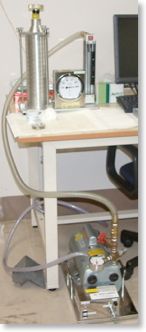
Fig.1. A cascade impactor.
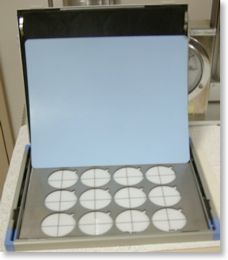
Fig.2. 'Imaging Plate' (light blue rectangular plate) and exposure cassette.
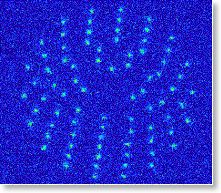
Fig.3. IP image of alpha particle emissions. Each bright spot is made of a number of microspots due to alpha particle incidence.
2. Quantitative Analysis of Behavior of Aerosol Particle-attached and Unattached Components of Radon Decay Products
The concentration of radon decay products attached aerosol particles in indoor air varies by its size, due to complicated processes of attachment onto a general (not-radioactive) aerosol particle, deposition of aerosol particles onto any surface such as wall and floor and ventilation. Studying these processes quantitatively, factors which decide radioactive aerosol particle size distribution would be understood, and representative size distribution in human living spaces and conditions of its formation would be clarified. This would make more precise estimation of radiological dose by radon, and universal knowledge of physics of aerosol.
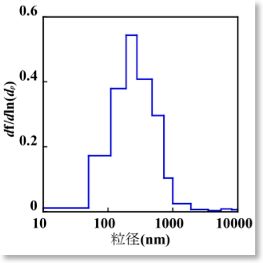
Fig. 4 A measured size distribution of radioactive aerosol particle in indoor air that radon decay products attach on. Radon decay products attach typically on particles with aerodynamic diameters of several hundreds nanometers (nm).
3. Survey of Indoor radon and thoron in Living Spaces
Using measuring techniques mentioned above, we have cooperated in survey of exposure to indoor radon in dwellings in China where there are many dwellings with higher indoor radon and/or thoron concentrations and in India where higher back ground radiation due to natural radioactivity in soil is found in some regions.
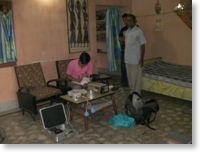
Fig. 5 Survey in India.
>> back
